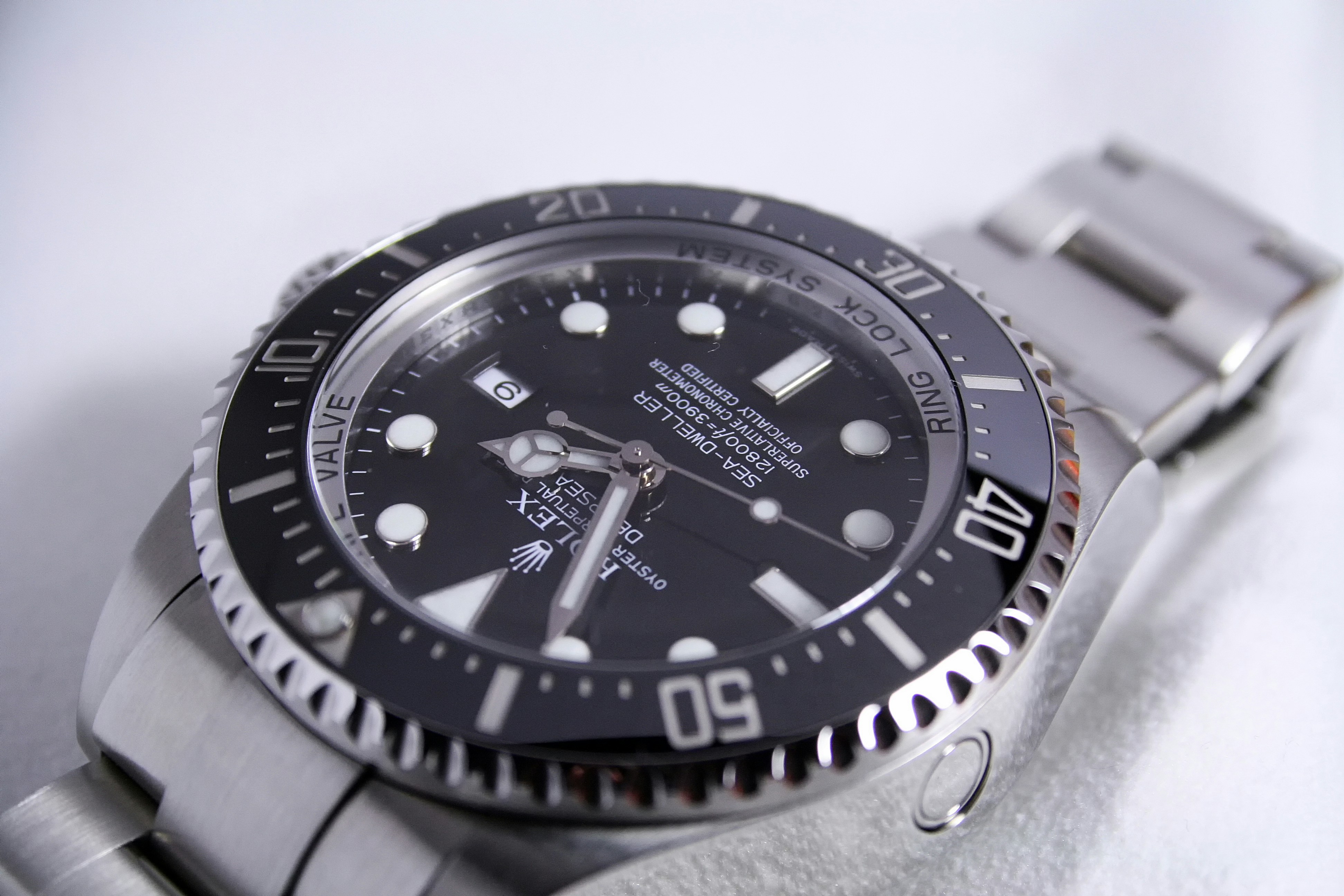Complication refers to additional functions that the movement performs outside of telling time.
Example: A Stopwatch and an Elapsed Time bezel are both considered complications.
Date
Date complication is one of the most popular and simplest complications on a watch.
Date Window

A Date Window is also known as an aperture. Some watches have a magnifying lens over the date window (like Rolex Datejust and Day-Date), the lens is called Cyclops-eye lens.
Big Date

Big Date display usually features two windows and is significantly larger and easily readable. Left window usually displays numbers 0-3 and the right window shows numbers 0-9.
Date Wheel
Date Wheel or Bankers date is displayed on the periphery of the dial and designated with a center sweep hand.
Subsidiary Dial
Subsidiary Dial date display is a subdial that is added to the face of the watch. Most often a subsidiary dial date display is found in watches with a number of complications.
Day-Date

A Day-Date complication adds a day of the week to a date complication. A classic day-date dial lay out would feature a day display at 12 o’clock position and a date at the 3 o’clock position. However, there are also watches that display the day and the date side by side.
Triple Calendar
Triple Calendar is also known as a Complete Calendar. This complication also displays month and year.
Perpetual Calendar
Perpetual Calendar is a complex type of calendar that features day, date, month, year, as well as takes into the account leap year.
Annual Calendar
Annual Calendar is a calendar that does not take leap year into the account.
Tachymeter

Tachymeter is used to measure units per hour and is designed to calculate the speed at which the wearer moves over a certain distance. A tachymeter can also be used to measure industrial production. Usually this complication comes on watches with other chronograph functions.
Moonphase

In modern day world, the moonphase feature is more decorative than useful. Originally used by sailors to gauge tides, this feature accurately displays phases of the moon: full, half, quarter, or new moon.
Power Reserve Indicator

Power Reserve Indicator measures the amount of tension left on the mainspring and displays it in hours or days on the dial.
Minute Repeater
Minute Repeater is activated by a small lever on the side of the case. When the lever is activated a watch will chime or make noise after a certain amount of time has passed.
Slide- Rule
Slide-Rule is also known in US as a slipstick and is a mechanical analog computer. The slide rule is primarily used for performing complex calculations such as multiplication, division, roots, logarithms, and trigonometry but it can also be used for addition and subtraction. Slide rules come in a wide range of styles, however in the world of horology they are generally seen in a circular form.
Time Zone Complications
GMT (Greenwich Mean Time)

A GMT watch will easily display two or more time zones. This particular style of watch was first produced by Rolex for Pan Am pilots.
GMT with Independent Hour Hand

In this particular style of the multiple time zone watch, the 24 hour hand is set independently from the regular hour hand. In some watches this allows for a triple time zone setting.
World Time Zone

In a watch with a world time zone function, the inner bezel will have a 24 hour display and the outer bezel will have the names of the cities displayed on it. The outer bezel is set by the wearer and the inner bezel corresponds with the given city. Allowing for a simple way to set a watch without all the hassle of attempting to figure out the time difference.

